The tubers are a part of the plant (also known as corn) - a plant that grows and develops well in low-lying areas, along ponds or flooded muddy areas. They are found in many provinces and cities in the North such as Nam Dinh , Hung Yen, Hai Duong. However, the plant in Nam Truc (Nam Dinh) is known to many people.
Accordingly, this special food tuber is grown a lot in An La village and neighboring hamlets of Nghia An commune, Nam Truc district, Nam Dinh province. According to statistics, Nghia An commune currently has more than 100 households cultivating water chestnuts with a total area of over 10 hectares. Water chestnut season usually lasts only about 1.5 months (from mid-October to the end of November) every year.
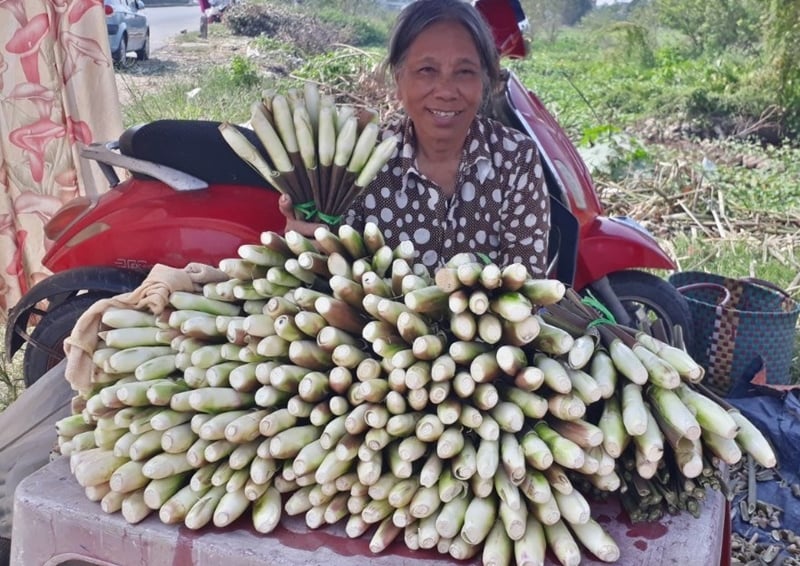 |
| A mobile stall selling lotus roots of people in An La village, Nghia An commune. (Photo: Kim Chien) |
Talking about her hometown’s specialty, Ms. Pham Thi Huong, a lacquer tree grower in An La village, Nghia An commune, said: lacquer trees have been planted on this land for about 40 years. We, the locals, usually plant lacquer trees from around February to March of the lunar calendar, and after 7-9 months, lacquer trees produce tubers.
During the harvest season, the lotus is cut close to the base, the leaves on top are removed and only the bulbous part, which looks like a pestle, is kept. At first glance, the lotus root looks very similar to lemongrass but is larger and brighter in color. After peeling off all the skin, people get the lotus root flesh to process into many delicious dishes.
“The lotus plant is easy to plant, easy to grow and develop well. During the cultivation process, no pesticides need to be sprayed. Quality lotus tubers are often plump and white from the inside out. This is a truly clean food…” – Ms. Huong shared.
Mr. Tran Dinh Thong, another resident of Nghia An commune, said that the water chestnut can be eaten raw or cooked and the preparation is simple. After peeling off the outer skin, just wash the water chestnut and cut it into thin slices. Nam Dinh people often stir-fry water chestnut with beef or pork, but the most popular and favorite dish is still water chestnut stir-fried with chicken or duck eggs. After thinly slicing the water chestnut, stir-fry it over medium heat until cooked, then add eggs, herbs and season to taste. In addition, water chestnut can be made into salad, or boiled and dipped in tamarind sauce.
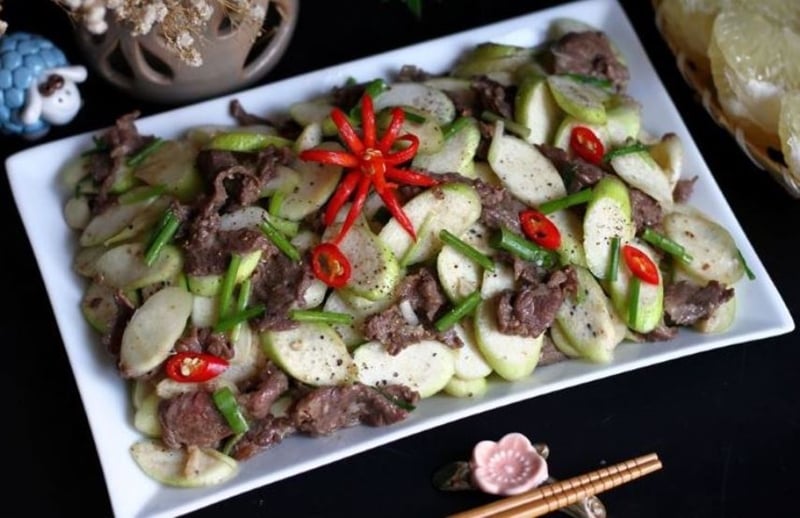 |
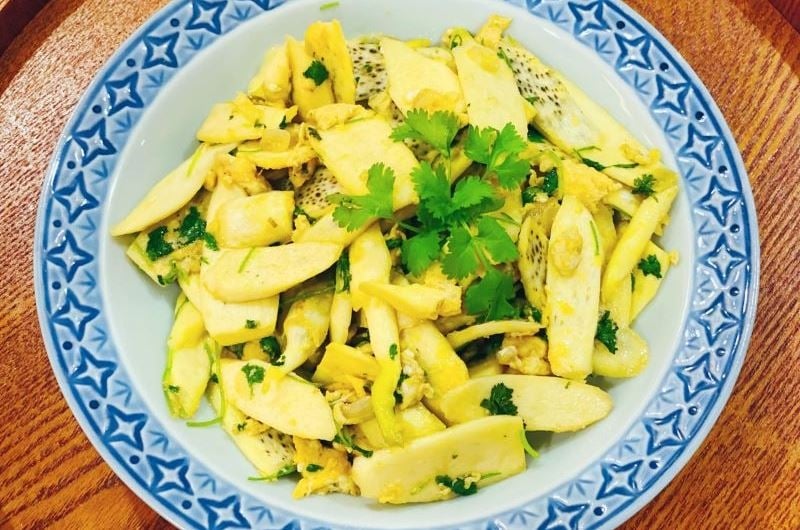 |
| Water chestnut is an ingredient in many delicious dishes rich in the culinary flavors of the Southern region. (Photo: Bao Ngoc) |
According to Mr. Thong, the stir-fried water chestnut with beef dish, although it is a rustic dish, is not too different from other vegetables stir-fried with beef. However, the stir-fried water chestnut with beef dish makes even the most fastidious eaters unable to stop eating. In this dish, the water chestnut after being processed still retains its natural sweetness and crunchiness, combined with the soft beef, it is truly an irresistible flavor. When served with hot rice, diners can only "eat" until they are full!
As for the salad, after being pre-processed in boiling water, the water chestnuts will be cut into long strips and mixed with fried egg rolls, adding a little ham. When mixing, you can add a little sugar, salt, ground pepper and sesame oil according to your family's taste. Water chestnut salad is considered a light dish, suitable for the elderly or those with high blood pressure, high cholesterol or diabetes.
Boiled water chestnuts sound simple, but I know that this is the most popular way to prepare this rustic tuber. No need to be fancy, boiled water chestnuts are still enough to conquer everyone with their irresistible sweet taste. Boiled water chestnuts are very sweet and slightly soft, served with a little salt or soy sauce, it is extremely delicious. When chewing water chestnuts, in addition to the characteristic sweetness, the eater can feel the nutty, fatty taste of water chestnuts on the tip of the tongue...
In addition, according to the comments of diners who have enjoyed the water chestnut, this tuber has a crunchy texture and a natural sweet taste when eaten raw, quite similar to the water chestnut tree in the West. When cooked, the water chestnut has a soft, fatty texture, with a rich taste of the Southern land.
Because of its crunchy and cool characteristics, water chestnut tubers have long been sought after by many shops and restaurants in and outside Nam Dinh to prepare dishes. Water chestnut tubers can be eaten raw even when hungry without fear of poisoning. Local water chestnut growers still have the habit of eating raw water chestnut tubers to stave off hunger or thirst when working hard in the fields.
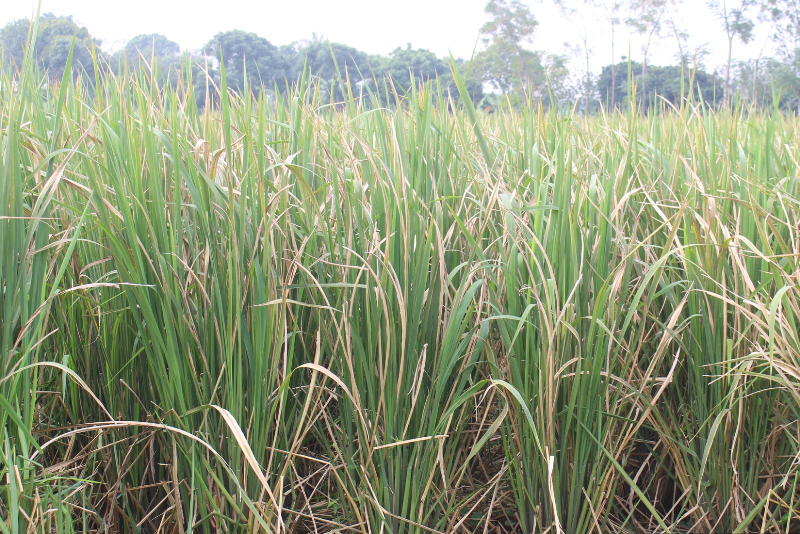 |
| The Nieng tree is ready to harvest tubers in Nghia An commune, Nam Truc district. (Photo: Kim Chien) |
Currently, the nieng is in the main harvest season, so traders are coming to collect and sell it locally. Some people sell it along the roads, serving passersby to buy as gifts and to enjoy.
At local markets, nieng is sold in bundles or by weight, with prices ranging from 20,000 to 25,000 VND/kg, depending on size. In Hanoi , the price is higher, around 40,000 to 60,000 VND/bundle of 10 tubers (depending on location and time).
To choose delicious lotus tubers, according to local people, you need to pay attention to the size, prioritize big and plump tubers, choose young tubers, with few brown leaves or still green, layers of leaves stacked firmly on top of each other. In addition, you should buy lotus tubers before the sun rises, because at this time the tubers will be less likely to wilt due to dehydration. If the store sells white and purple lotus tubers, prioritize the white ones. Because white lotus tubers have less fiber, they will taste better...
Not only is it an ingredient for many delicious dishes, water chestnuts can also bring some health benefits. According to Oriental medicine, water chestnuts are sweet, cool, have the effect of preventing atherosclerosis and high blood pressure, help clear heat, detoxify, diuretic, contribute to the treatment of diabetes, ... so they are good for health.
At present, if you have the opportunity to visit Nam Dinh, visitors should buy for themselves a few fresh bunches of nieng to fully enjoy the sweet taste of this delicious specialty./.
Source: https://dangcongsan.vn/kinh-te/cu-nieng-am-thuc-dat-thanh-nam-683002.html



![[Photo] Da Nang residents "hunt for photos" of big waves at the mouth of the Han River](https://vphoto.vietnam.vn/thumb/1200x675/vietnam/resource/IMAGE/2025/10/21/1761043632309_ndo_br_11-jpg.webp)

![[Photo] Prime Minister Pham Minh Chinh received Mr. Yamamoto Ichita, Governor of Gunma Province (Japan)](https://vphoto.vietnam.vn/thumb/1200x675/vietnam/resource/IMAGE/2025/10/21/1761032833411_dsc-8867-jpg.webp)

![[Photo] Prime Minister Pham Minh Chinh meets with Speaker of the Hungarian National Assembly Kover Laszlo](https://vphoto.vietnam.vn/thumb/1200x675/vietnam/resource/IMAGE/2025/10/20/1760970413415_dsc-8111-jpg.webp)



















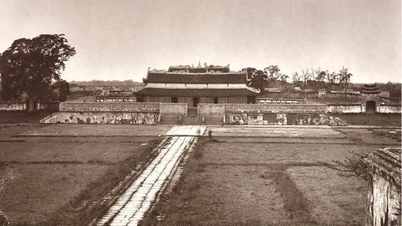






























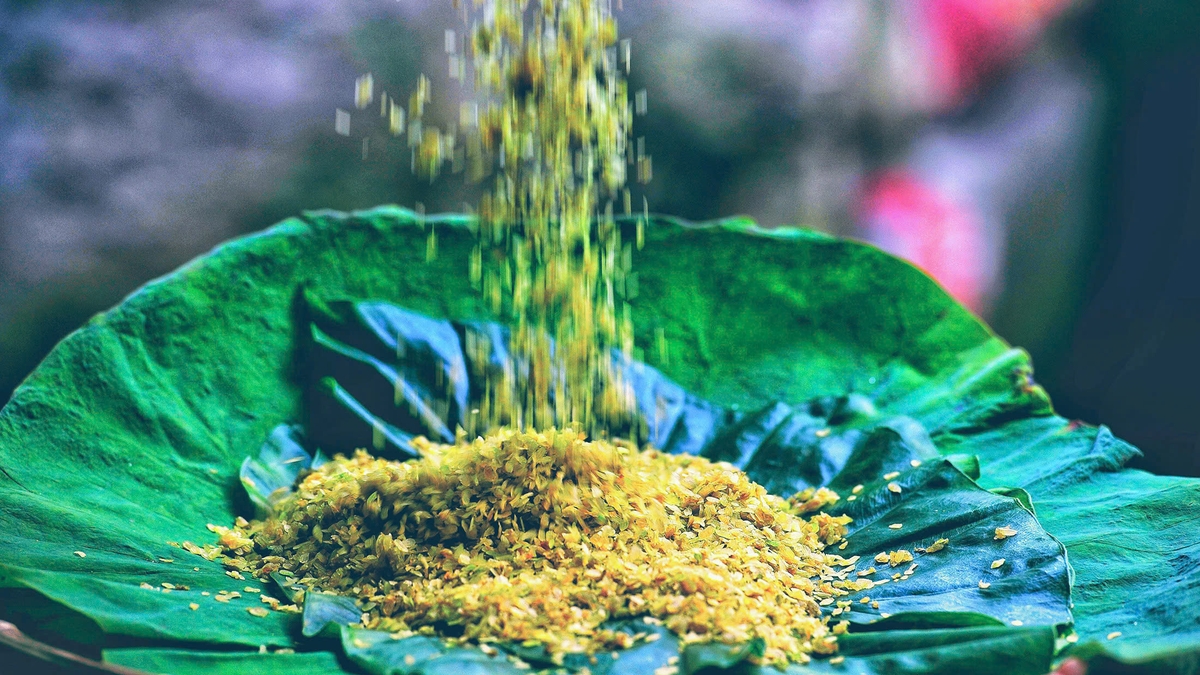

































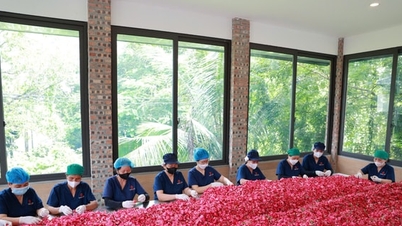






Comment (0)